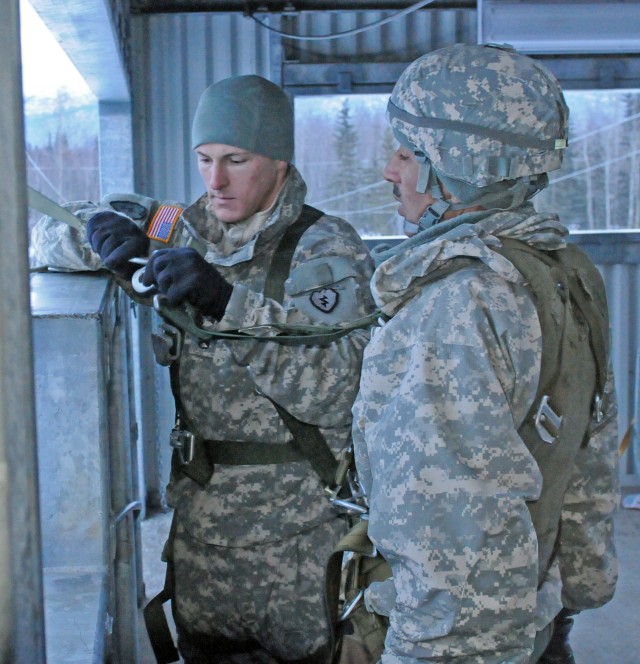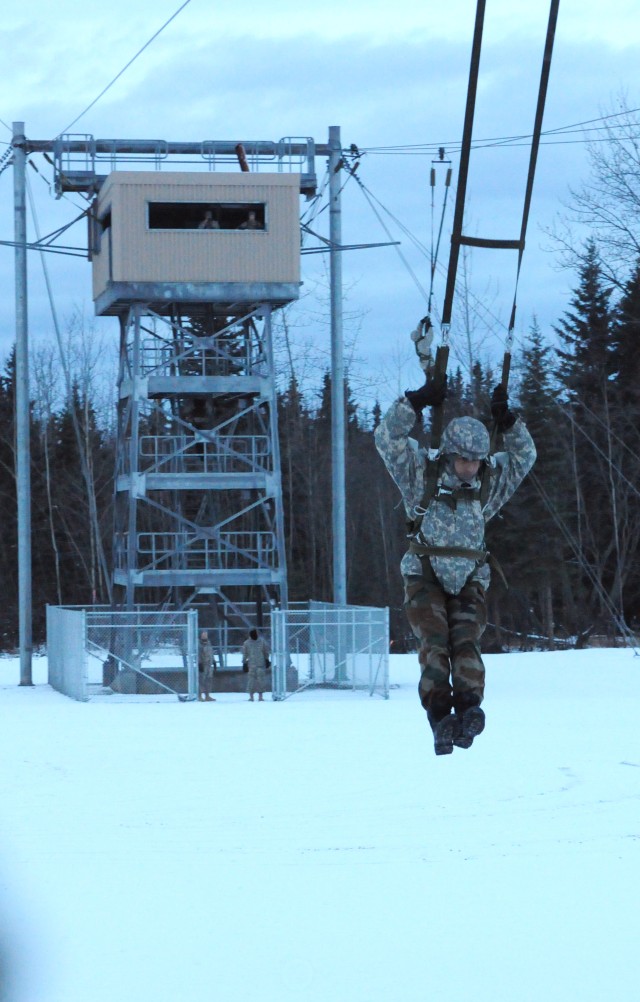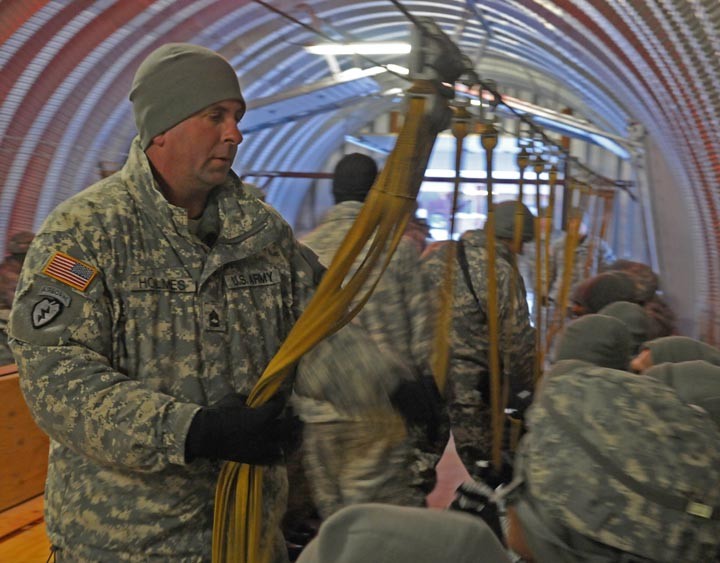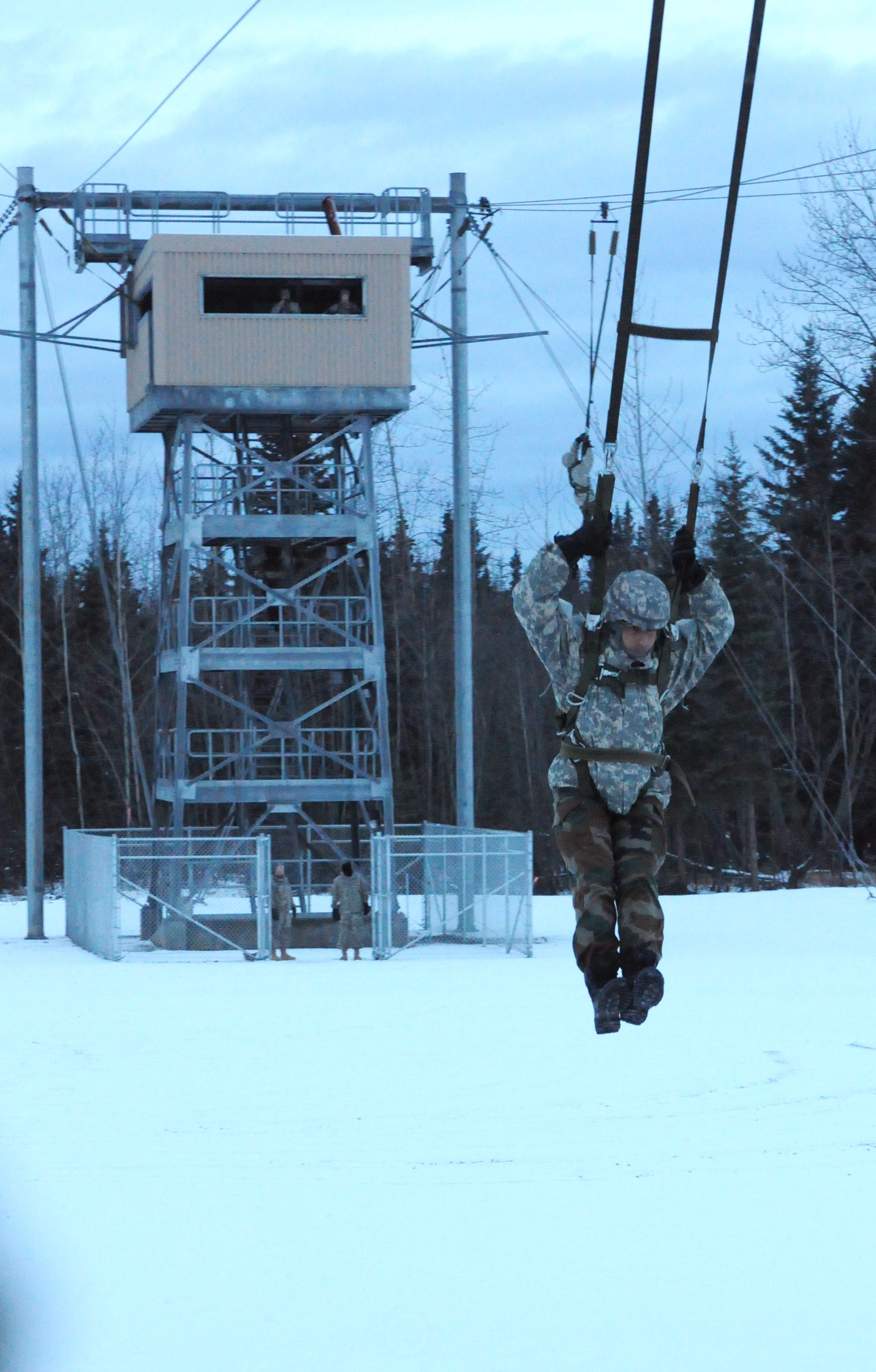JOINT BASE ELMENDORF-RICHARDSON, Alaska (Nov. 4, 2010) -- Soldiers of U.S. Army Alaska and the Indian Army combined a diversity of procedures, techniques and cultures to conduct basic airborne refresher training Nov. 2-3.
The training was held at one of the airborne sustainment training areas on Joint Base Elmendorf-Richardson, Alaska, in preparation for a combined jump Nov. 4.
Soldiers of 1st Squadron (Airborne), 40th Cavalry Regiment, 4th Brigade Combat Team (Airborne), 25th Infantry Division, trained and coached the Indian soldiers on U.S. Army airborne procedures during the training as part of the joint peacekeeping exercise Yudh Abhyas 2010.
"The purpose of this training was to build a bond and partnership so that we can work together and have trust in each other. It also allowed us to train and learn each other's processes," said Jumpmaster Staff Sgt. David Morgan, human resources sergeant, Headquarters and Headquarters Troop. "Because we are both airborne units from different armies, we pretty much have the same missions, though we do it a bit differently."
The Indian soldiers were instructed on U.S. Army rigging and exiting procedures, proper jump form and the jumpmasters' role.
"The biggest part is safety, even though they know how to jump already, just to be sure that they know how to jump with our methods so that we can have a successful jump," added Morgan.
Indian soldiers did rehearsal jumps from a 34-foot zip-line tower to ensure their technique complied with U.S. Army procedures.
"Their airborne training mimics ours, but their exits are mostly rear exits, so their technique is a little different," said Jumpmaster Staff Sgt. Patrick Liddle, fire support sergeant, HHT. "Also, most of them have 30, 40, 50 jumps. One guy I talked to had 60 jumps."
Training the soldiers proved to be simple because of the similarities in procedures and eagerness to learn, even though their jumping style differed, said Morgan.
"They were able to grasp the key thing Ac"a,! keeping their knees and feet together on their jumps Ac"a,! but we keep our legs out. They bring them in, in sort of a cannonball style," said Spc. Sean Boivin, mortar-man, HHT. "It's cool to see them jump because it's nice to know that not everyone does the exact same thing."
Soldiers from both countries wanted to get to know each other, take pictures, share stories and build partnerships that are part of the overall training mission of professional armies, said Morgan.
"This training shows that we support them and that we want to learn from them just as much as we would like to share knowledge with them. It's a great foundation for a friendship," said Boivin.
Yudh Abhyas is a regularly-scheduled bilateral, conventional-forces training exercise, sponsored by U.S. Army, Pacific and the Indian Army. The exercise is designed to promote cooperation between the two militaries to develop U.S. Army Pacific and USARAK relationships with India and promote interoperability through combined Military Decision Making Process, battle tracking and maneuvering forces, and exchange of tactics, techniques and procedures.
During the exercise, U.S. Soldiers and their Indian counterparts will conduct a Command Post Exercise, airborne operations training, marksmanship and tactical training and take part in cultural exchanges to improve partnership readiness and cooperation between the armies of India and the United States
Follow Yudh Abhyas 2010 on the Web at <a href="http://www.usarpac.army.mil/ya10" target="_blank">http://www.usarpac.army.mil/ya10</a>, <a href="http://www.facebook.com/pages/US-Army-Pacific/113619942022" target="_blank">Facebook</a> and <a href="http://www.flickr.com/photos/usarpac/sets/72157625288366066" target="_blank">Flickr</a>.
Related Links:
Indian Army Soldiers qualify at range, exchange tactics with U.S. Army Alaska Soldiers








Social Sharing